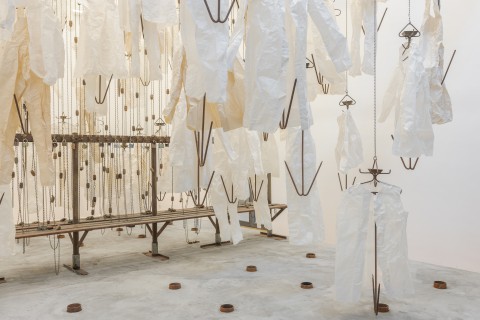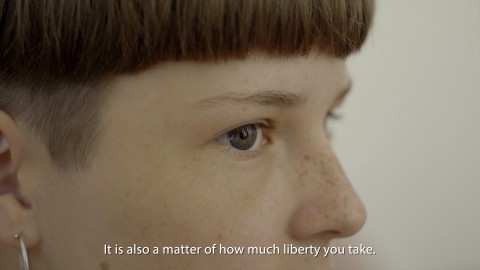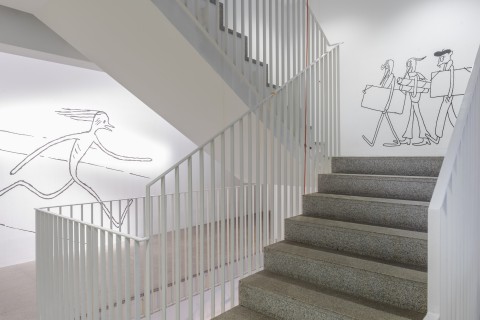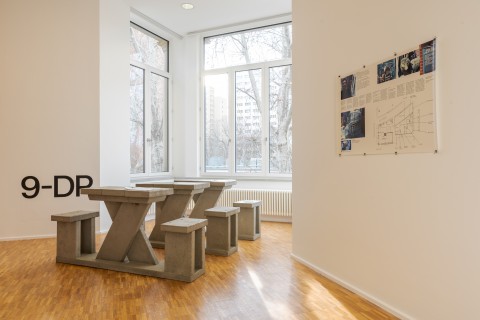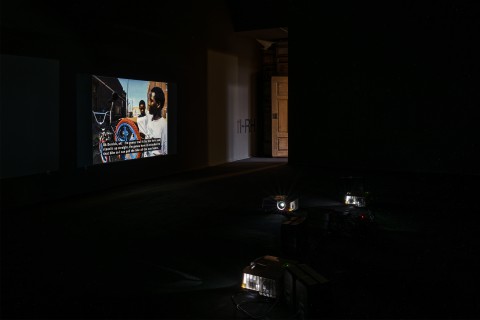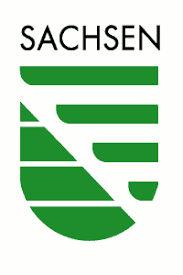Has work come to an end ? Or is it just invisible because it takes place somewhere else, because it is automated or immaterial ? What thought processes are stimulated when we deal with different materials and social contexts? What does artistic work consist of? Is it a multitude of exchange processes, a constant work form, a marketable product or all of these things at the same time ? These are the questions this year’s collection exhibition addresses. The presentation includes artworks from three decades – new acquisitions, loans and works from the collection. The central feature is the expansive installation BEYOND II by Till Exit, from the year 1995, which is shown at the GfZK for the first time. It stands alongside Der Schrank, the art collection of Ramon Haze, a figure invented by Holmer Feldmann and Andreas Grahl in 1996. Both works were inspired by the changes following 1989, which fundamentally changed not only production methods, but also the social conditions of life and work. These conditions are questioned from today’s perspective by Das Radikale Empatiachat, a video from 2018 in which Anna Witt invites young adults to formulate their expectations of the present day. Naherholung – an edition by fabrics interseason from the fashion collection #CLUB MED / CHLOR (2003)* – is concerned with the marketing of leisure time. Sarah Morris’ film am/pm*** from 1999, using the example of Las Vegas, shows how the illusion of recreation outside of the world of work is perpetuated. Bänderobjekten (1994)*** by Maren Roloff, constructed from rubber hoses, and the series of screen prints cotton rubber (2017)*** by Céline Condorelli address the issue of the processing of materials. In the slide projection “The Archive of the Lives of the Little Sisters of Jesus with Circuses and Fun Fair” (2012)*, Andrea Büttner deals with the activities of an order of nuns who work together with others at fairgrounds. The connection between collective work and social added value is manifested in the Running Tables (1997)** by Dan Peterman, and in the photo and video installation The Building – The Bike Shop – Andy’s Furniture (2001)** by Gitte Villesen, which shows everyday life in Peterman’s neighbourhood project in Chicago. The comic drawings of Anna Haifisch appear in the exhibition again and again. A figure created by Haifisch, The Artist (since 2016)*, comments on the art of others and attempts to locate itself within the art system, at the same time as calling it into question. Am Ende diese Arbeit – the title of the exhibition ultimately also describes processes of artistic and curatorial work that branch out, sometimes leading to completely different spaces for thought and action than they originally set out to discover. Some of these processes are revealed and comment on one other – sometimes with humorous results.
* 8.2.-20.9.2020
** 8.2.-10.5.2020
*** 14.7.-31.1.2021

